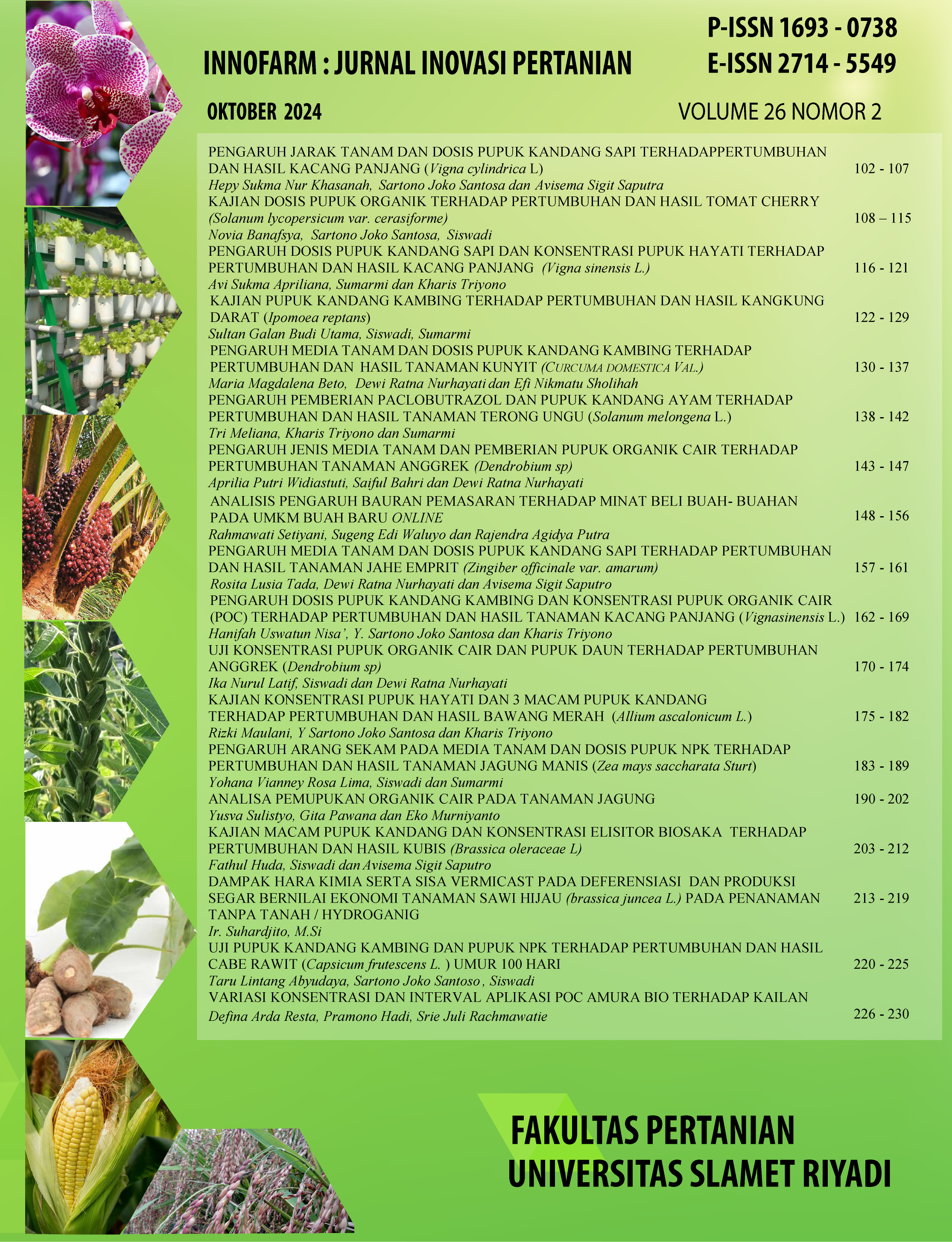GROWTH DYNAMICS AND YIELD OF MUSWIRA GREEN PLANT (BRASSICA JUNCEA L.) AS A DIRECT EFFECT AND VERMICOMPOS RESIDUES ON HYDROGANIC PLANTING SYSTEMS.
Efek langsung, Efek Residu, Hidroganik, Vermikompos
DOI:
https://doi.org/10.33061/innofarm.v26i2.11280Abstract
This research aims to determine the direct and residual effects of vermicompost during four planting periods on the growth and yield of mustard greens using a hydroganic planting system. The research was carried out in a greenhouse in Jagir Village, Sine District, Ngawi Regency, East Java. The design used was a Completely Randomized Design (CRD) with six treatments, namely control (inorganic treatment), 100, 200, 300, 400, and 500 g/pot of vermicompost. All treatments were repeated five times and each treatment contained 4 samples. The results of this study show that differences in vermicompost dosage have a significant effect on the growth and yield of green mustard plants with direct effects and first, second and third residual effects. Vermicompost doses lower than 500 g/pot were not able to match the growth of green mustard plants using inorganic fertilizer. The dynamics of growth and yield of green mustard plants starting from the direct effect to the third residual effect shows changes in the growth rate and results obtained. In the first residual effect, the vermicompost dose of 300-500 g/pot treatment showed an increase in the growth and yield of green mustard plants with an average increase of 22.5%. In the second residue effect, vermicompost treatment showed an average increase in plant growth and yield of 17.2% compared to the first residue effect. Meanwhile, in the third residual effect, plant growth and yield decreased by 69.4% compared to the second residual effect. Thus the highest results were achieved in the second residual effect (third planting). These results suggest that the use of vermicompost fertilizer in hydroganic green mustard cultivation is highly recommended because it can save fertilizer use until the third planting. Meanwhile, in the fourth planting, it is necessary to add more organic fertilizer.
Downloads
Published
Issue
Section
License
Copyright (c) 2024 Suhardjito Suhardjito

This work is licensed under a Creative Commons Attribution-NonCommercial 4.0 International License.
Authors who publish this journal agree to the following terms:
- Authors retain copyright and grant the journal right of first publication with the work simultaneously licensed under a Creative Commons Attribution License that allows others to share the work with an acknowledgement of the work's authorship and initial publication in this journal.
- Authors can separately make additional contractual arrangements for non-exclusive distribution published by the journal (e.g., publish it in a book), with an acknowledgement of its initial publication in this journal.
- Authors are allowed and encouraged to send their work via online (e.g., in the institutional repositories or their website) after published by the journal.


















